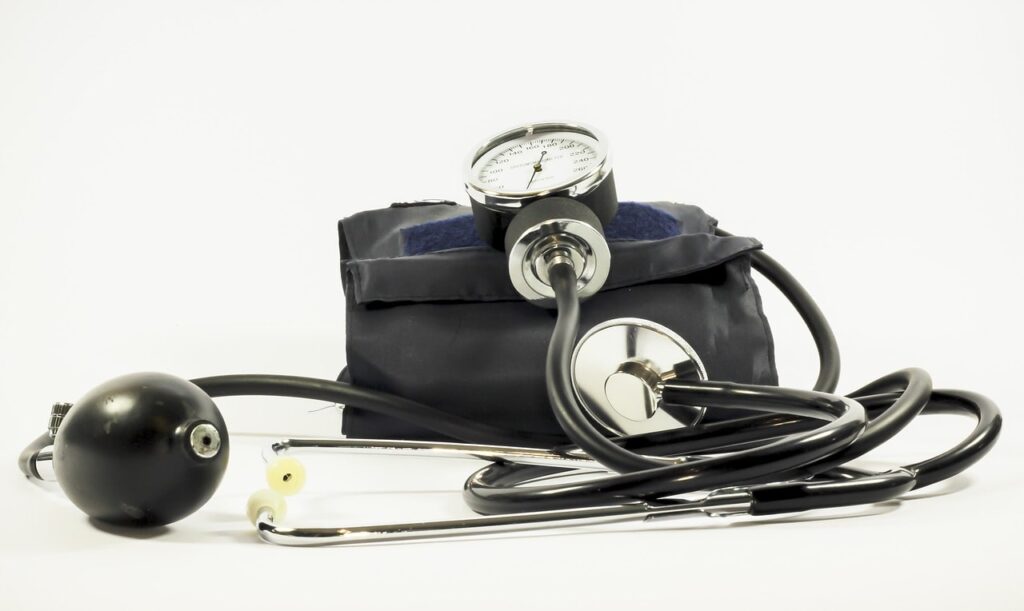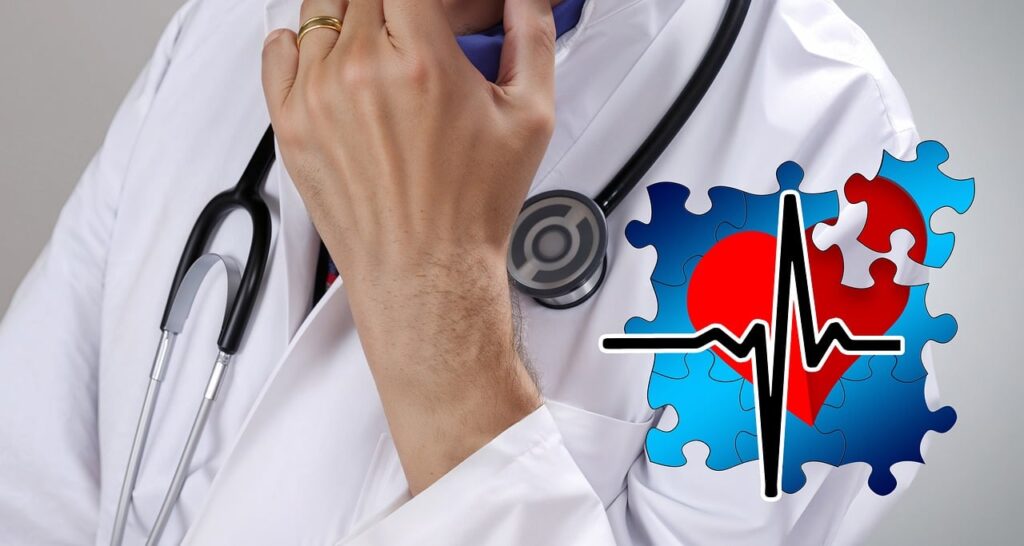How to Lower Blood Pressure Naturally—

Hypertension (high blood pressure) affects nearly 1.3 billion adults globally (WHO, 2023). While medications are effective, many patients seek complementary, natural approaches. As healthcare providers, it’s crucial to guide them toward evidence-based, non-pharmacological interventions that align with clinical guidelines (e.g., ACC/AHA).
How to Lower Blood Pressure Naturally– Here are 12 proven strategies to lower BP naturally, supported by research.
1. Adopt the DASH Diet
The Dietary Approaches to Stop Hypertension (DASH) is the gold standard for BP management. Key principles:
- High in potassium (bananas, spinach), magnesium (nuts, whole grains), and calcium (low-fat dairy).
- Low in: Sodium (<1,500 mg/day), processed foods, and red meat.
- Study: DASH reduces systolic BP by 8–14 mmHg (NEJM, 2023).
2. Reduce Sodium Intake
- Excess sodium causes fluid retention, straining blood vessels.
- Tip: Replace table salt with herbs/spices; avoid canned soups, deli meats.
- Data: Cutting 1,000 mg sodium daily lowers BP by 5–6 mmHg (JAMA, 2022).
3. Increase Potassium-Rich Foods
Potassium counteracts sodium’s effects by relaxing blood vessels.
- Top sources: sweet potatoes, avocados, beans, and coconut water.
- Target: 3,500–4,700 mg/day (NIH).
4. Exercise Regularly
- Aerobic exercise (brisk walking, cycling) for 150 mins/week lowers BP by 5–8 mmHg (Mayo Clinic).
- Resistance training: 2–3x/week reduces arterial stiffness.
5. Limit Alcohol & Caffeine
- Alcohol: More than one drink/day (women) or more than 2 (men) raises BP.
- Caffeine: May spike BP temporarily in sensitive individuals.
6. ManagStressss
ChroniStressss elevates cortisol, constricting blood vessels. Techniques:
- Deep breathing: 6 breaths/minute for 5 mins daily (Harvard Health).
- Meditation/Mindfulness: Lowers systolic BP by 4–5 mmHg (AHA, 2023).
7. OptimizSleepep
PooSleepep (<6 hours) disrupts circadian rhythms, increasing hypertension risk.
- Tip: Treat sleep apnea if present (linked to resistant hypertension).
8. Dark Chocolate & Hibiscus Tea
- Flavonoids in dark chocolate (70%+ cocoa) improve endothelial function (Hypertension, 2021).
- Hibiscus tea: 3 cups/day reduced BP by seven mmHg in a 2020 meta-analysis.
9. Quit Smoking
Nicotine constricts arteries and damages endothelial cells. BP improves within 20 mins of quitting (CDC).
10. Omega-3 Fatty Acids
- EPA/DHA (from fatty fish and algae oil) reduce inflammation and BP.
- Dose: 2–3 g/day for clinically significant effects (JNC 8).
11. Beetroot Juice
- High in nitrates, which convert to nitric oxide (vasodilator).
- Study: 250 mL/day lowered BP by 4–5 mmHg (Nutrition Reviews, 2023).
12. Monitor & Track Progress
- Recommend home BP monitors (validated by ESH).
- Apps like MyTherapy help patients log diet/BP trends.
Why Diet Matters in Hypertension
Hypertension strains the cardiovascular system, increasing risks of stroke, heart disease, and kidney damage. The DASH (Dietary Approaches to Stop Hypertension) diet, endorsed by the American Heart Association, emphasizes:
Low sodium (<1,500 mg/day)
High potassium, magnesium, and fiber
Limited processed foods
Top 10 Foods to Lower Blood Pressure | How to Lower Blood Pressure Naturally
1. Leafy Greens (Rich in Potassium & Nitrates)
Examples: Spinach, kale, Swiss chard
Mechanism: Potassium balances sodium; nitrates boost nitric oxide, improving vasodilation (Journal of Nutrition, 2022).
Serving Suggestion: 2 cups daily (raw or lightly steamed).
2. Berries (Anthocyanin Powerhouses)
Examples: Blueberries, strawberries, raspberries
Mechanism: Anthocyanins reduce arterial stiffness (American Journal of Clinical Nutrition, 2021).
Serving Suggestion: 1 cup daily (fresh/frozen).
3. Beets (Natural Nitrate Source)
Evidence: Beetroot juice lowers systolic BP by 4–5 mmHg (Hypertension, 2023).
Tip: Consume roasted beets or 250 mL juice (unsweetened).
4. Oats (Soluble Fiber for BP Control)
Mechanism: Beta-glucan fiber reduces LDL and BP (Journal of Hypertension, 2022).
Serving: ½ cup steel-cut oats daily.
5. Fatty Fish (Omega-3s Reduce Inflammation)
Examples: Salmon, mackerel, sardines
Effect: EPA/DHA lowers BP by 1–2 mmHg (Journal of the American College of Cardiology, 2023).
Dose: 2 servings/week (3.5 oz each).
6. Garlic (Allicin’s Vasodilatory Effect)
Study: Aged garlic extract reduces systolic BP by 7–10 mmHg (Nutrition Reviews, 2023).
Tip: 1–2 raw cloves or 600 mg extract daily.
7. Greek Yogurt (Calcium & Probiotics)
Mechanism: Calcium regulates vascular contraction; probiotics improve the gut-BP axis (Nutrients, 2023).
Choose: Unsweetened, low-fat (1 cup/day).
8. Pistachios (Magnesium & Healthy Fats)
Trial: 1–2 oz/day lowers peripheral resistance (Hypertension Research, 2022).
9. Dark Chocolate (Flavonoid-Rich)
Caveat: ≥70% cocoa; 1 oz/day reduces arterial stiffness (Heart, 2023).
10. Pomegranate (Antioxidant Effects)
Evidence: 150 mL juice daily lowers ACE activity (Clinical Nutrition, 2023).
Foods to Avoid with Hypertension
High-sodium processed foods (canned soups, deli meats)
Sugar-sweetened beverages (linked to a 12% hypertension risk)
Excessive alcohol (>1 drink/day for women, >2 for men)
When to Seek Medical Help
While these methods help, patients with BP ≥140/90 mmHg (or ≥130/80 for high-risk groups) may need pharmacotherapy. Always emphasize individualized care.
FAQs: How to Lower Blood Pressure Naturally
1. Can garlic lower blood pressure?
Yes, but modestly. Garlic (especially aged garlic extract) contains allicin, which may reduce systolic BP by 5–8 mmHg (Journal of Clinical Hypertension, 2021). It’s a supportive measure, not a replacement for prescribed treatments.
2. How long does it take for lifestyle changes to lower BP?
- Diet (e.g., DASH): 2–4 weeks for noticeable effects.
- Exercise: 3–6 weeks for consistent reductions.
- Stress management: Immediate improvements in acute stress; long-term benefits in 8+ weeks.
3. Does intermittent fasting help with hypertension?
Limited evidence. Some studies suggest time-restricted eating (e.g., 16:8) may improve insulin sensitivity and reduce BP by 3–4 mmHg (Cell Metabolism, 2022). However, results vary—monitor patients for hypoglycemia or dizziness.
4. Are supplements like magnesium or CoQ10 effective?
- Magnesium: May lower BP by 2–3 mmHg in deficient individuals (Hypertension, 2020). Recommended dose: 300–400 mg/day.
- CoQ10: Potential 5–10 mmHg reduction in systolic BP for statin users (Journal of Human Hypertension).
5. Can drinking water lower high blood pressure?
Dehydration temporarily raises BP due to reduced blood volume. While hydration is vital, excessive water intake won’t treat chronic hypertension.
6. Is caffeine bad for high blood pressure?
Caffeine can cause acute spikes (up to 10 mmHg) in sensitive individuals, but regular consumers often develop tolerance. Advise patients to limit to ≤400 mg/day (~3–4 cups of coffee) and monitor their response.
7. Does apple cider vinegar lower BP?
No strong evidence. While it may aid weight loss (indirectly affecting BP), no studies confirm a direct antihypertensive effect.
8. How much does stress affect blood pressure?
ChroniStress can elevate BP by 10–15 mmHg via cortisol and adrenaline. Techniques like biofeedback or yoga show clinically meaningful reductions (AHA, 2023).
9. Can I stop medications if my BP improves naturally?
Never without medical supervision. Lifestyle changes can reduce medication needs, but abrupt cessation risks rebound hypertension or stroke.
10. Which is better for BP: cardio or weight training?
- Cardio (e.g., walking, swimming): Best for immediate BP reduction.
Resistance training: Improves long-term vascular elasticity.

Ideal: A combination of both (ESC Guidelines, 2023).
